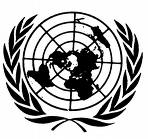
In yesterday’s Washington Post, Fred Hiatt makes the case that the UN is at fault for suffering in Darfur and Myanmar.
Yes, that’s Darfur, where the UN Department of Peacekeeping Operations has been begging and pleading with member states to contribute essential equipment, weapons and supplies (much has been made of a critical helicopter shortage, but right now it seems that water is just as much a limiting factor), and Myanmar, where the UN is the only actor that has actually been able to provide substantial aid.
Despite the difficulties, UN agencies report that they have been active on the ground. The UN Children’s Fund (UNICEF) says it has begun setting up “child-friendly spaces” in camps where people are sheltering, to ensure that children receive care and protection. The United Nations Development Programme (UNDP) is using boats and vehicles to provide immediate assistance to people in 19 locations in the affected area. The World Food Programme (WFP) has reached 27,000 people in the Irrawaddy delta with crucial food supplies and the World Health Organization (WHO) has deployed experts to support Government relief efforts and to supply emergency health kits.
Granted, much more is needed, but UN personnel are making a difference on the ground in a way no one else has.
Also troubling is Hiatt’s apparent misunderstanding of the emerging Responsibility to Protect norm. A bit of background: R2P was adopted at the 2006 World Summit. It’s a complex concept and that boils down to two core principles. First, governments have a responsibility to protect their own people from grave crises. Second, the international community has a responsibility to protect populations that have been neglected or abused by their governments.
Unfortunately, Hiatt (like some others), seems to equate this principle with an international obligation to trample over the sovereignty of Myanmar in one fell swoop. It would be a disaster if R2P were first operationalized in the form of a hastily arranged military intervention in Myanmar, both for the Burmese people, for whom such an intervention could just as easily exacerbate the crisis as bring relief, and for the promise of the R2P concept, which actually outlines out a set of diplomatic and humanitarian options that are intended to avert a military showdown and preserve national sovereignty. For R2P to really grow in importance in a positive way, military intervention must be a last resort. Ivo Daalder and Paul Stares get R2P right, when they prescribe more diplomatic pressure and potential air drops of relief supplies. And while Michael O’Hanlon doesn’t explicitly reference R2P, he makes a smart call for a “Chapter 6 and a half” resolution under the Charter.
Ironically, many of the folks clamoring for the UN to brush aside the regimes in Khartoum and Naypyidaw are also convinced that the UN poses a threat to U.S. national sovereignty. And so many people lamenting the slow deployment and other imitations of UN peacekeeping aren’t outraged by (and often support) our policy of chronically underfunding missions that we authorize in the Security Council.
Any international response needs to be strong, but measured. And once we choose our course, we had better be prepared to pony up — financially and diplomatically — to make sure the job gets done right.
— Scott Paul


13 comments on “Save the World, Now!”